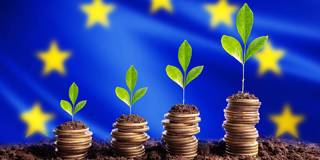As a new strategy outlined by the European Investment Bank notes, the European Union's regional funding policies must evolve to address multiple goals at once, starting with the transition to a net-zero economy. Cohesion and climate action are now two sides of the same coin.
BRUSSELS – Many of the European Union’s poorer members are in a double bind. Though these countries are among those most exposed to the destructive effects of climate change, they also face greater risks from the shift to a green, zero-emission, digital economy.
To achieve a smooth and just transition, these countries will need investments geared toward their specific needs. Historically, much of the public investment in the EU’s poorer countries has been in trade-related infrastructure such as highways and railways. But these growth-enhancing investment strategies now need to evolve to help everyone manage the costs of the green transition, which will require new forms of infrastructure and measures to support workers in carbon-intensive industries.
For Europe to carry out its ambitious climate agenda, it must address the relative paucity of investment in sustainability in economically weaker regions. That is why the European Investment Bank is rethinking its own “cohesion orientation,” as outlined in a new paper examining our investments in less-developed parts of the EU. Our ambition is to raise the amount we lend in these regions to 45% of our total investments, and to expand our support to include all regions where GDP per capita is below the EU average.

BRUSSELS – Many of the European Union’s poorer members are in a double bind. Though these countries are among those most exposed to the destructive effects of climate change, they also face greater risks from the shift to a green, zero-emission, digital economy.
To achieve a smooth and just transition, these countries will need investments geared toward their specific needs. Historically, much of the public investment in the EU’s poorer countries has been in trade-related infrastructure such as highways and railways. But these growth-enhancing investment strategies now need to evolve to help everyone manage the costs of the green transition, which will require new forms of infrastructure and measures to support workers in carbon-intensive industries.
For Europe to carry out its ambitious climate agenda, it must address the relative paucity of investment in sustainability in economically weaker regions. That is why the European Investment Bank is rethinking its own “cohesion orientation,” as outlined in a new paper examining our investments in less-developed parts of the EU. Our ambition is to raise the amount we lend in these regions to 45% of our total investments, and to expand our support to include all regions where GDP per capita is below the EU average.